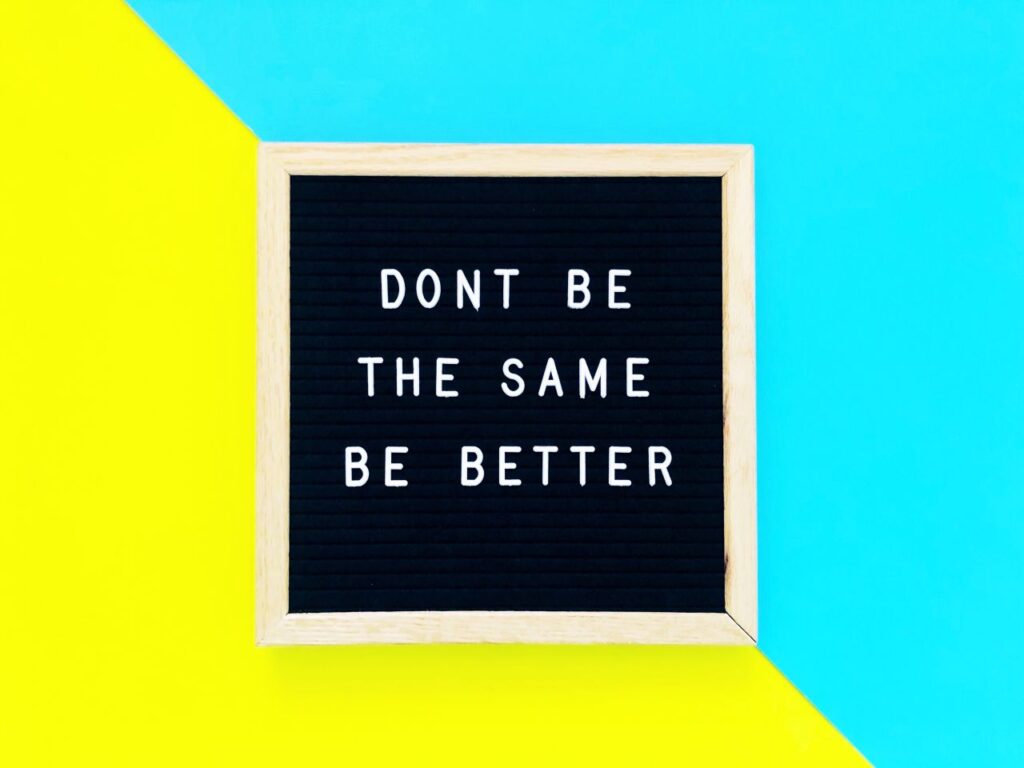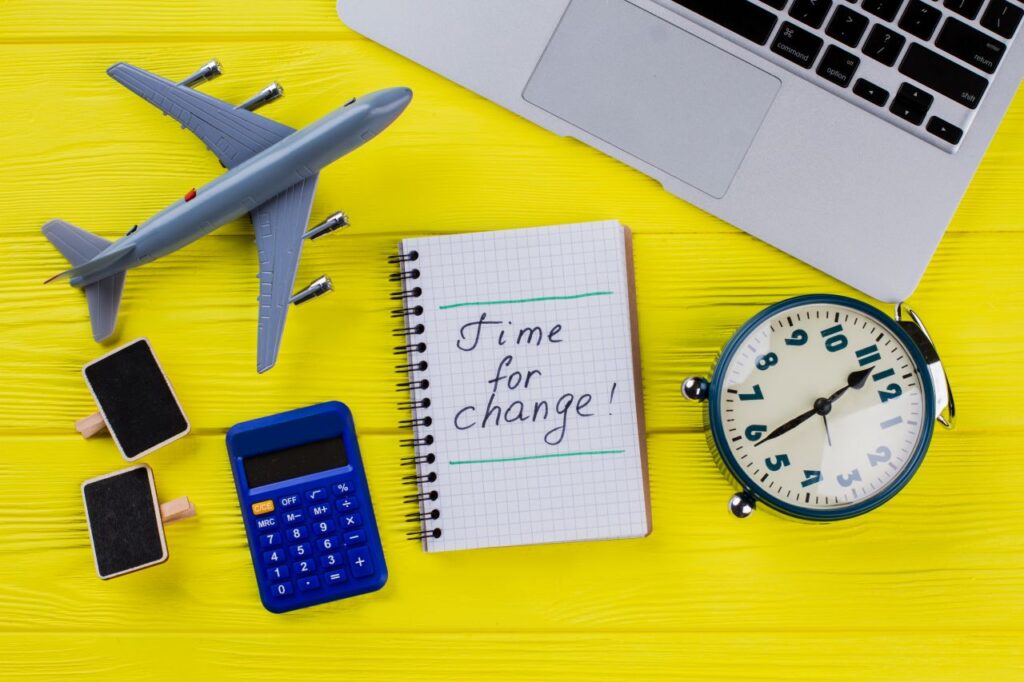Unveiling the 6 Stages of Change for Uplifting People Navigating Transformation
Hey there! Change is always buzzing around us, molding our experiences and nudging us towards personal growth. So, let’s chat about the 6 stages of change – a sort of roadmap for those diving into the sea of transformation like us.
First up is the Precontemplation stage, where someone is cruising through life, unaware of the need for change, perhaps not noticing their sedentary lifestyle needs a shake-up.
Moving on to Contemplation, imagine pondering the perks of adopting a healthier lifestyle – like thinking about swapping burgers for salads and contemplating those gym vibes.
Now, onto Preparation – it’s like gearing up for the big change. Think meal plans and gym memberships getting sorted out for the impending lifestyle overhaul.
Action is where the real hustle happens. This is when the new habits take center stage – like hitting the gym regularly and munching on that broccoli like it’s the snack of the century.
Next is Maintenance. This is the long game, where those newly formed habits stick around, becoming a permanent part of life. It’s like making those positive changes your daily groove.
Finally, we hit Termination. This is the golden moment where the changed behavior is deeply ingrained, and the risk of slipping back into old habits is almost zilch.
But hey, change isn’t a straightforward path. It’s more like a cycle. You might find yourself revisiting different stages – like after hitting Maintenance, a curveball in life might send you back to Contemplation for some fine-tuning.
Now, the Relapse Stage is a reality check. Even with the best intentions, slip-ups happen. It’s not a failure; it’s just a detour on your journey. For instance, someone trying to quit smoking might hit a rough patch but can use it to reassess and recommit.
Acceptance is a big player here. Recognizing the need for change is the first step, like realizing it’s time for a career shift to kickstart the transition from Contemplation to Preparation.
For those who like a hands-on approach, there’s the Stages of Change Worksheet. It’s like a self-reflection tool to keep tabs on your progress.
And don’t forget the Behavior Changes Examples. Whether it’s embracing a new exercise routine or ditching the habit of procrastination, these examples give you a practical peek into the nitty-gritty of the stages of change.
So, why all this talk about stages?
Well, embracing change is a journey. Knowing these stages gives you the superpower to navigate this process like a pro. Whether you’re mulling over a change, knee-deep in the action, or relishing the maintenance phase, each step paints a stroke on the canvas of personal growth. Remember, change isn’t a destination; it’s a never-ending adventure.
Ready for your transformation ride?
Self-efficacy and temptation studies, maintenance can last between six months and five years.
(Prochaska & Velicer, 1997)
What is Change and Why Does it Matter?
Change is a constant force in our lives, shaping our experiences and propelling us forward on the journey of personal development. Understanding the stages of change is crucial for anyone seeking to embrace transformation consciously. In this blog post, we’ll explore the 6 stages of change, the cycle of change, and delve into topics such as the relapse stage and the stages of change acceptance.
Success in transformation skyrockets by 5.8 times when CEOs weave a captivating change narrative. Its further boosted to 6.3 times by aligning senior leaders with consistent and impactful messages throughout the organization.
Mc Kinsey & Company1

6 Stages of Change: Transtheoretical Model (TTM)
The 6 stages of change, also known as the Transtheoretical Model (TTM), is a model developed by psychologists James Prochaska and Carlo DiClemente. It describes the process individuals go through when making a behavior change. Here are the six stages:
Precontemplation
In this first stage, individuals are not yet aware or are in denial about the need for change. They may not see their behavior as a problem and have no intention of changing it.
Example: Someone unaware of the need for change in their sedentary lifestyle.
Contemplation
At stage two of change, individuals start to recognize that their behavior is a problem and consider the possibility of change. They may weigh the pros and cons of changing and may start to gather information about how to change.
Example: Reflecting on the benefits of adopting a healthier diet and exercise routine.
Preparation
In this crucial stage, individuals have made the decision to change and are actively preparing to take action. They may set a specific date to start the change and may take small steps towards it, such as seeking support or making a plan.
Example: Creating a meal plan and joining a gym to prepare for the upcoming lifestyle change.
Action
Individuals start to modify their behavior and take concrete steps towards change in this critical stage of change. They may implement strategies and techniques to support their new behavior and may face challenges and setbacks along the way.
Example: Actively incorporating the new habits into daily life, such as regular workouts and healthier eating.
Maintenance
Stage four is when individuals have successfully changed their behavior and are working to sustain the change over time. They may develop strategies to prevent relapse and may seek ongoing support and reinforcement.
Example: Sustaining the newly formed habits over an extended period, making them a permanent part of one’s lifestyle.
Termination
In this last stage, individuals have fully integrated the new behavior into their lifestyle and no longer feel the temptation to return to their old behavior. The change has become a permanent part of their life.
Example: The point where the changed behavior becomes ingrained, and the risk of relapse diminishes significantly.
It’s important to note that not everyone progresses through these stages in a linear fashion. People may move back and forth between stages, and the time it takes to progress through each stage can vary. The model emphasizes the importance of tailoring interventions and support to individuals at their specific stage of change.
Thus, the 6-Step Model of Change is a roadmap that guides individuals through the transformative process.
In terms of health behaviors, basic research has generated a rule of thumb for at-risk populations: 40% in precontemplation, 40% in contemplation, and 20% in preparation.
In other words, here’s a simple breakdown for at-risk groups
40% of the world’s vulnerable populations haven’t thought about change yet, 40% are thinking about it, and 20% are getting ready to make a move.
J O Prochaska 1, W F Velicer2
Easy, right? 🌟

Reality of Stage of Change Examples
Let’s break down the stages of change with some relatable examples.
Imagine you’re in the “Precontemplation” stage—it’s like not realizing you need a change, just cruising along. Now, “Contemplation” is when you start thinking about change, like considering a healthier lifestyle. “Preparation” is gearing up—making a meal plan, joining a gym.
In “Action,” you’re actively incorporating new habits, and in “Maintenance,” you’re making these changes stick. Finally, “Termination” is when these changes become second nature, and the risk of going back diminishes. It’s like your journey from thinking about change to it becoming a part of you.
Behavior Changes Examples
Examining specific behavior changes, such as adopting a new exercise routine or breaking a habit like procrastination, can provide practical insights into the stages of change. These examples can range from adopting a healthier lifestyle to overcoming addiction or improving relationships. By examining these examples, individuals can gain insights into the challenges and rewards of the change process.
The Soina Foundation
The Soina Foundation, led by Anita Soina, is all about helping economically disadvantaged communities like those of Kajiado, Kenya to make positive changes. We are like guides, focusing on stages like realizing education gaps, addressing gender imbalances, and ensuring access to clean water. The foundation works on eliminating harmful practices like FGM and helps with food security through sustainable farming, especially in areas affected by climate change.
We are also like teachers, sharing knowledge about climate and ways to adapt and stay resilient. Through our efforts, out top empowering charity aims to make a lasting impact on education, healthcare, gender equality, and the environment, kind of like a friend cheering on positive transformations.
[mailerlite_form form_id=1]
Let us explore other real-life examples of behavior change in communities in dire need to better understand the stages of change.
5 Prominent Behavior Changes for at-risk Communities in Africa
Exploring real-life examples of behavior changes amongst at-risk communities worldwide provides valuable insights into the stages of change and offers potential strategies for improvement. Let’s focus on examples from various at-risk communities, with a special emphasis on facts that other African communities facing similar challenges can consider emulating.
HIV/AIDS Prevention in Sub-Saharan Africa
- Behavior Change Example: Numerous African communities have implemented successful HIV/AIDS prevention programs. Countries like Uganda have seen significant reductions in HIV prevalence by promoting awareness, encouraging condom use, and advocating for regular testing.
- Stages of Change Connection: The success in HIV prevention involves stages like awareness (precontemplation), education (contemplation), promoting safe practices (action), and sustaining these practices (maintenance).
Malaria Prevention in Ghana
- Behavior Change Example: Ghana has made strides in malaria prevention by promoting the use of bed nets and educating communities on the importance of keeping their surroundings free from stagnant water. This has led to a notable decline in malaria cases.
- Stages of Change Connection: The initiatives in Ghana involve stages such as raising awareness about the importance of prevention (precontemplation), educating on preventive measures (contemplation and preparation), and promoting consistent use (action and maintenance).
Clean Water Access in Rural Kenya
- Behavior Change Example: In rural Kenya, community-led initiatives have focused on promoting hygiene and improving access to clean water sources. This has resulted in a reduction in waterborne diseases and improved overall community health.
- Stages of Change Connection: Communities in Kenya have progressed through stages like understanding the need for change (precontemplation), planning and implementing water access solutions (preparation), and maintaining these practices for long-term health benefits (maintenance).
Educational Empowerment in South Africa
- Behavior Change Example: Various programs in South Africa have focused on empowering at-risk communities through education. Initiatives such as mentorship programs and skill development have led to improved economic opportunities and reduced vulnerability.
- Stages of Change Connection: Education programs involve stages like creating awareness of the benefits of education (precontemplation), providing resources and support for education (preparation), and maintaining the pursuit of knowledge for long-term empowerment (maintenance).
Family Planning in Nigeria
- Behavior Change Example: Nigeria has implemented successful family planning initiatives, promoting awareness, accessibility, and education. This has contributed to a gradual shift in attitudes toward family size and improved maternal and child health outcomes.
- Stages of Change Connection: Family planning efforts involve stages like creating awareness and dispelling myths (precontemplation), providing resources for family planning (preparation), and sustaining these practices for the well-being of families (maintenance).

The Cycle of Change
Change is not a linear process; it’s a cycle. Understanding that individuals may revisit different stages multiple times is essential. Example: After reaching the maintenance stage, a person might face a life event triggering a return to contemplation for further improvement.
The Relapse Stage of Change
Even with the best intentions, relapse can occur. It’s crucial to view relapse as a part of the journey rather than a failure.
Example: Someone trying to quit smoking might relapse during a stressful period but can use the experience to reassess and renew their commitment.
Stages of Change Acceptance
Acceptance is a pivotal element in the change process, influencing the ease with which individuals move through the stages.
Example: Acknowledging the need for a career change is the first step in transitioning from contemplation to preparation.
Additional Insights on 5 Stages of Change
Building on the 6-step model, the 5 stages include precontemplation, contemplation, preparation, action, and maintenance. This simplified model emphasizes the ongoing nature of the change process.
Five Stages of Change Model
The five stages of change model is like your guide through the twists and turns of personal growth. Think of it as a reliable friend, acknowledging that everyone’s journey is unique. It’s a roadmap for therapists, counselors, and individuals, helping navigate the complexities of behavior change.
It’s widely used because it’s like a comprehensive toolkit—no matter where you are on your journey, this model has got you covered.
5 Stages of Change Chart
Okay, think of the 5 stages of change chart as your visual cheerleader on the sidelines, cheering you through every step of your growth game. It’s like a colorful map showing you the route from thinking about change to actually making it happen. Picture it as your go-to guide, making complex ideas super easy to grasp.
This chart isn’t just informative; it’s your friendly companion on this exciting journey of personal transformation.

Stages of Change Worksheet
Utilizing a stages of change worksheet can be a helpful tool for self-reflection and tracking progress. This worksheet helps individuals identify which stage they are currently in, set goals, and track their progress. It serves as a valuable tool for self-reflection and self-improvement.
To facilitate personal growth and transformation, what is the best way to use a stages of change worksheet?
5 Stages of Change Worksheet
Let’s talk about 5 stages of change worksheets—they’re like your interactive companions on this growth adventure. It’s not just a piece of paper; it’s a tool for active self-reflection and goal-setting. Therapists use it too, fostering open communication about your transformative journey.
This worksheet is like a structured journal, helping you track progress and identify areas for further growth. It’s not just about writing; it’s about actively engaging with your personal evolution.
Empowering People
Embracing change is a transformative journey, and understanding the stages involved can empower individuals to navigate the process more effectively. Whether you find yourself in contemplation, actively engaged in change, or celebrating the maintenance stage, each step contributes to the rich tapestry of personal growth.
Are you empowered to take control of your transformation journey? Understanding the stages of change and recognizing where you are in the process and utilizing the appropriate strategies, you too can navigate change with confidence and achieve your desired outcomes.
As you embark on your unique path of transformation, remember that change is not a destination but a continuous evolution.
Community Growth and Development
Change is a constant in life, and embracing it consciously is essential for personal growth and development. By understanding the 6 stages of change, the cycle of change, and the various aspects of the change process, individuals can navigate transformation with clarity and purpose. Remember, change may not always be easy, but with the right mindset and support, it can lead to a brighter and more fulfilling future. Embrace change, embrace growth, and embrace the possibilities that lie ahead.

Recap on 5 Stages of Transtheoretical Model
Ever felt like you needed a comprehensive approach to change? That’s where the 5 stages of the transtheoretical model shine. It’s like your reliable compass, guiding you through the stages of precontemplation, contemplation, preparation, action, and maintenance. Used in health promotion, it’s like your personalized strategy, recognizing that everyone’s readiness for change is different. Therapists love it because it’s like having a personalized intervention plan, tailor-made for your unique journey.
Stages of Change Printout
Ever wished for a tangible guide you can hold in your hands?
That’s where stages of change printouts come in. It’s like having your personalized self-help booklet, ready to capture your reflections and progress notes. Therapists love it too—it’s a handy tool to structure sessions and make discussions about your growth journey interactive. This printout isn’t just a piece of paper; it’s your customizable roadmap to positive change.
Continue reading to see how you can get one!
Stages of Change Printable
Think of stages of change pintables as your customized toolkit for growth. They’re like little helpers you can tailor to your liking—perfect for every type of learner. Whether you prefer digital or physical, these pintables got you covered.
Share them with friends, use them in workshops, or keep them for your personal reflection. These pintables aren’t just informative; they’re your versatile companions on the path to positive change.
Do you want one? Join us using this form!
[mailerlite_form form_id=1]
Stages of Change Free Printable
Imagine having a helpful buddy in your transformation journey—well, that’s what stages of change free pintables are! These are like little guides you can print out without spending a dime. It’s like having a roadmap for your personal growth that you can access anytime, anywhere. No need to worry about costs—just download, print, and you’re all set! These resources make embracing change not just affordable but also accessible to everyone.
If you want a copy, start by being in our mailing list for the latest from our desk!
Ready to be a catalyst for positive change?
Join us at The Soina Foundation in uplifting communities. Your support matters.
Grab the latest updates and be a part of an empowering and transformative journey!
[mailerlite_form form_id=1]
5 FAQs on the 6 Stages of Change
- Why is the Termination stage significant in the change process? Termination signifies ingrained behavior, reducing the risk of relapse significantly.
- How does the Cycle of Change impact individuals? The cycle implies that individuals may revisit different stages multiple times, adapting to life’s twists.
- Why is acceptance crucial in the change process? Acceptance is the first step, influencing the ease with which individuals navigate through the stages.
- How does the Stages of Change Worksheet help? It’s a valuable tool for self-reflection, aiding in tracking progress on the transformative journey.
- Why focus on empowering people in the change process? Empowering individuals enhances their ability to navigate the stages of change effectively.
Your transformative journey awaits—embrace the change, grow, and celebrate your unique evolution! 🌟🌱
References
These sources provide in-depth information on the stages of change, their cyclical nature, and the factors that influence individuals’ movement through these stages.
- Prochaska, J. O., & DiClemente, C. C. (1983). Stages and processes of self-change of smoking: Toward an integrative model of change. Journal of Consulting and Clinical Psychology, 51(3), 390-395.
- Prochaska, J. O., & DiClemente, C. C. (1984). The transtheoretical approach: Crossing traditional boundaries of therapy. Homewood, IL: Dow Jones-Irwin.
- Norcross, J. C., Krebs, P. M., & Prochaska, J. O. (2011). Stages of change. Journal of Clinical Psychology, 67(2), 143-154.
Sources
These sources provide detailed information on the mentioned examples and can offer further insights into successful behavior change initiatives in at-risk communities.
- UNAIDS. (2021). Global AIDS Update.
- Ghana Health Service. (2019). National Malaria Control Program Annual Report.
- Water.org. (2021). Kenya Water Crisis.
- Statistics South Africa. (2021). General Household Survey.
- National Population Commission Nigeria. (2019). Nigeria Demographic and Health Survey.
Additional Notes
- Losing from day one: Why even successful transformations fall short. McKinsey & Company ↩︎
- Prochaska JO, Velicer WF. The transtheoretical model of health behavior change. Am J Health Promot. 1997 Sep-Oct;12(1):38-48. doi: 10.4278/0890-1171-12.1.38. PMID: 10170434. ↩︎
- Stages of Change Theory – StatPearls ↩︎




